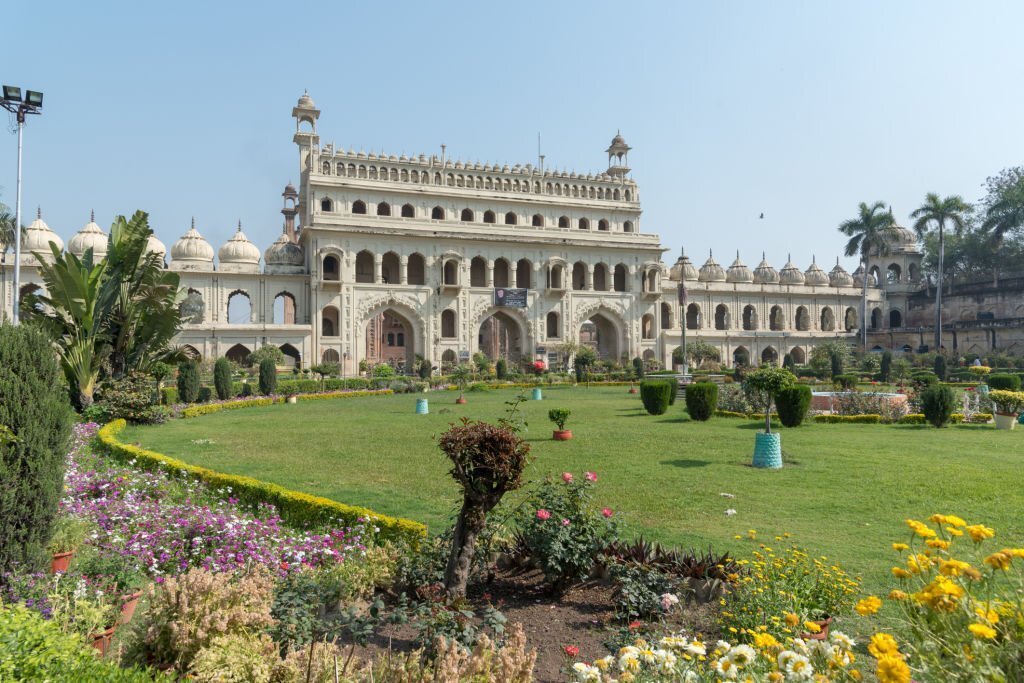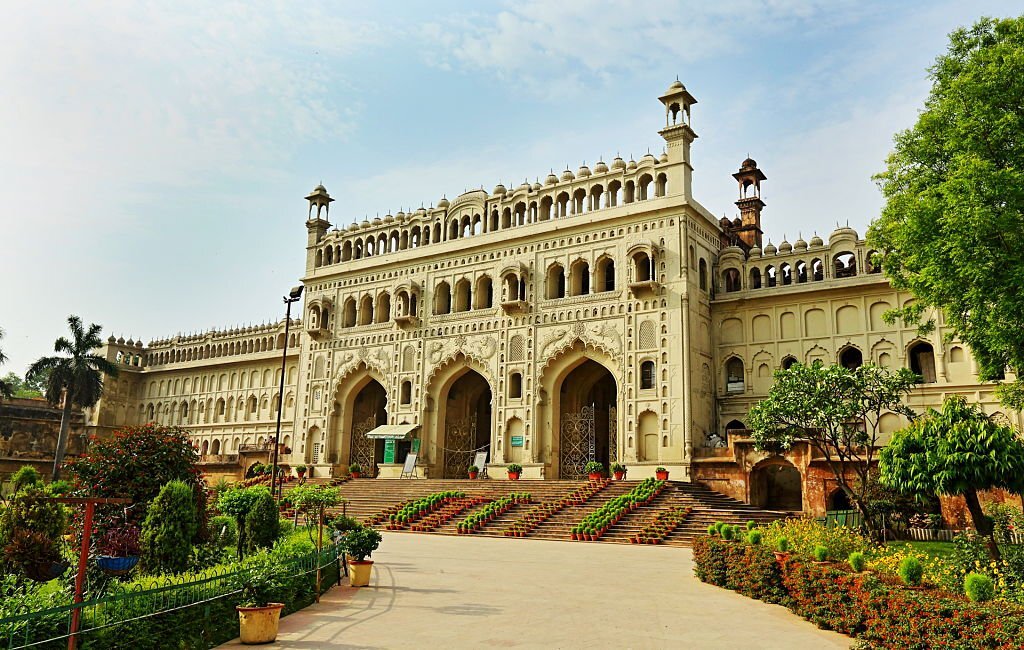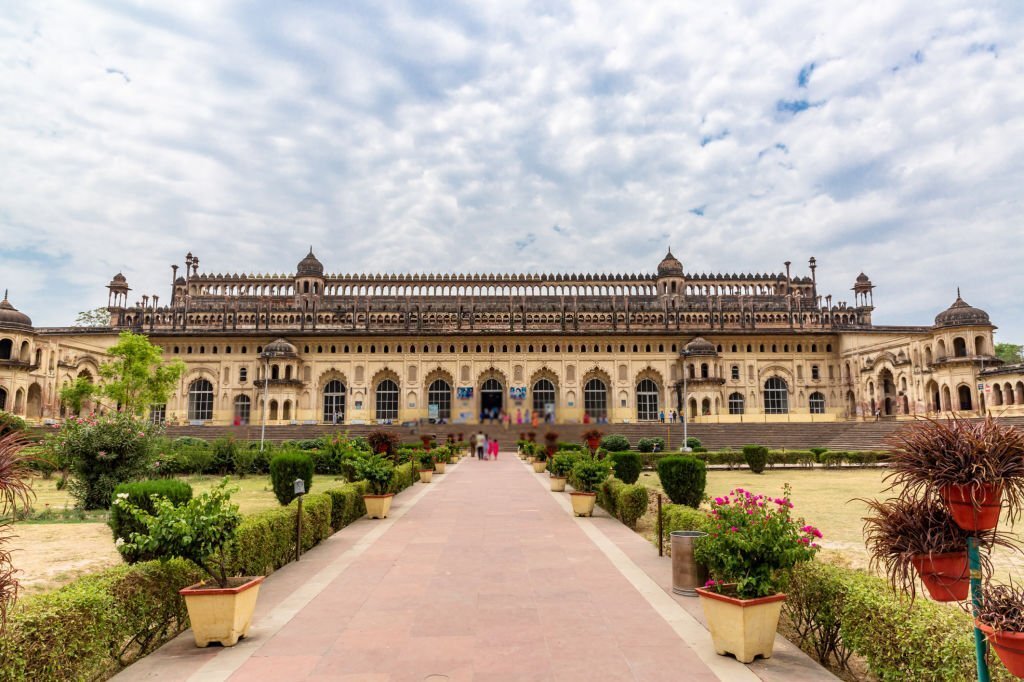What do you get when you combine spiritual magic, stunning architectural design, and an intriguing past? similar to Bara Imambara. Bara Imambara, a magnificent religious structure in Lucknow’s City of Nawabs, was built in the 18th century. It was constructed by Nawab Asaf-ud-Daula of Awadh and is commonly referred to as the Asafi Imambara. The monument is one of the most beautiful historical sites to see in Lucknow and features spectacular Mughal style architecture.
Bara Imambara is an important location for religious gatherings and worship, particularly during the month of Muharram when Shia Muslims flock here in large numbers to lament the passing of Husayn ibn Ali, the Prophet Muhammad’s grandson. However, the monument is also a well-liked tourist destination due to its outstanding architecture and the numerous fascinating stories connected to it.
Information about Bara Imambara in Lucknow
Location: Machchhi Bhavan, Husainabad Trust Road, Lucknow, Uttar Pradesh
Timings: 6 a.m. to 5 p.m.
Entry fee (per individual)
Indian nationals
Adults: 50 INR
Children: 25 INR
Foreigners: 500 INR
By Commission: Awadh’s Nawab Asaf-ud-Daula
Year of Inception: 1784
Finished in the year: 1791
Ideal Season to Visit: Oct. thru Mar.
Time Needed:1-2 hours
Used materials:Bricks from Lakhor, rice husk
Entrance: two curved entranceways
Bara Imambara: History

A devastating famine struck the province of Awadh in 1784, causing both common people and nobles to suffer from poverty and starvation. At this period, Nawab Asaf-ud-Daula made the decision to construct Bara Imambara as a means of famine relief.
Bara Imambara: Currently
Bara Imambara is a significant place of prayer for Shia Muslims and is situated on a bustling street in the old section of Lucknow city. Muslims and tourists alike frequently visit the monument throughout the year. The graves of Begum Shamsunnisa and Nawab Asaf-ud-Daula are located in the great hall of the Imambara. During the month of Muharram, a large number of Shia Muslim devotees come to the monument to engage in holy rites. Three well-kept gardens can also be found at the Imambara.
It’s estimated that at than 20,000 labourers were used to build the monument. The noblemen and upper class would visit the site at night to destroy whatever had been constructed during the day while the working class laboured all day to build the structure. This was done to extend the construction project’s duration and keep nobles and commoners busy throughout the current famine. Both the hunger and the building of the stunning monument, Bara Imambara, lasted 11 years.
Bara Imambara: Architecture
Bara Imambara, created by renowned architect Hafiz Kifayatullah at the time, is an engineering marvel. It is one of Lucknow’s most stunning landmarks and demonstrates a fusion of Gothic and Mughal architectural styles. The monument’s construction did not include any metal or wood, which is what most people find interesting.
There are two sizable gates at the Imambara. The Asafi Mosque is located at one end of the gate, and a sizable baoli is located at the other. Three arches and a twin fish design, the Nawabs’ emblem, can be seen on the monument’s main entrance. There are a total of nine halls, with the central room being the largest.
The Nawab Asaf-ud-Daula’s mausoleum is located in the centre chamber, which is 164 feet long and 52 feet wide. Although the entire chamber features excellent design, a special attention should go to the vaulted roof or ceiling. Due to the fact that the hall was intended to be utilised for religious rituals and prayers, the 50-foot-high arched ceiling is not supported by any iron rods, columns, or beams. The roof’s blocks were deftly put together using an interlocking brick method, which has allowed it to remain sturdy for decades without the aid of supporting beams or pillars.
The eight additional smaller chambers that circle the main hall feature roofs that vary in height. With ingenious use of the space above these chambers, a three-dimensional maze-like network of linking balconies and tunnels was built, with entrance provided via 489 similar doorways. Bhul Bhulaiya is the name of this section of the Imambara. From the main hall, a network of corridors extends to the rooftop. Other notable sites at Bara Imambara are the imposing Asafi Mosque and Shahi Baoli.
Attractions in Bara Imambara

Central Hall: One of the highlights of Bara Imambara is this enormous hall with its outstanding architecture. As was previously noted, this hall’s ceiling is constructed in a distinctive manner without the use of pillars or beams.
Bhul Bhulaiya: Bhul Bhulaiya, as its name suggests, is a maze-like system comprising over 1000 tunnels and 489 similar doors. You must go with a guide even though it is one of the most amazing areas of the Imambara. It may be impossible to find your way through this complex network of interconnected tunnels on your own.
The Asafi Mosque : The mosque, which is located on the Imambara’s western flank, features stunning Mughal construction.
The Shahi Baoli : On the eastern side of the monument, a five-story stepwell exhibits superb architectural design. It was allegedly the covert location from where the Nawab’s officers would monitor the guests. The well’s construction makes it possible for guests to see themselves reflected in it as they stand at the entrance.
Getting to Bara Imambara
The capital of Uttar Pradesh, Lucknow, has adequate access to the air, rail, and roads. Bara Imambara is located about 15 kilometres from Lucknow’s Chaudhury Charan Singh International Airport. You can rent a taxi or auto-rickshaw from Lucknow Railway Station, which is 6 km away, if you’re travelling by rail.
Within the city, taxis, autorickshaws, cycle rickshaws, buses, and metro trains are frequently used types of transportation. Bara Imambara is 2 kilometres from Shakti Bus Stand, while Durgapuri is 3 km from the closest metro station.
Facts You May Not Know About Bara Imambara
There are no pillars or beams supporting the ceiling of the central arched room, which is reputedly the largest arched hall in the world.
The Imambara’s labyrinth, known as the Bhul Bhulaiya, was not purposefully built. It was more akin to a maze that was intended to support the weight of this enormous monument because it is situated on swampy ground.
Since some visitors who entered without a guide went missing, much of the Bhul Bhulaiya’s passages are now off limits to the general public.
The memorial also contains the grave of Kifayatullah, the Bara Imambara’s architect.




